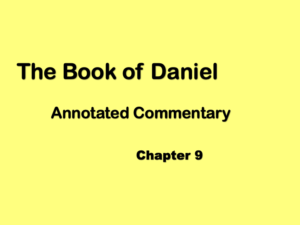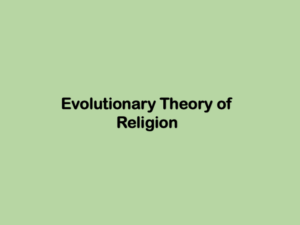Daniel 2: 1-16 Nebuchadnezzar Dreams a Dream
Chapter 2 of Daniel takes place in 602 BC, three years after the events of chapter 1. Daniel has finished his training and is now an advisor in the court of Nebuchadnezzar. The king has had troubling dreams, and he turns to his advisors for an explanation. Nebuchadnezzar, however, appears to distrust some of his advisors, particularly a group called the Chaldeans, and uses this opportunity to test his advisors. The king not only demands they interpret the dream for him, but also demands they tell him the contents of the dream. He seeks proof of the supernatural nature of the advice they give and threatens to execute the Chaldeans if they don’t produce.

The first half of Daniel chapter 2 is fairly straight forward, so let’s jump right into the text.
In the second year of the reign of Nebuchadnezzar, Nebuchadnezzar dreamed dreams; and his spirit was troubled, and his sleep went from him.
Daniel 2: 1
If you remember from chapter 1, the accession year of Nebuchadnezzar (the year he became king) was 605 BC, then 604 BC would be Nebuchadnezzar’s first year and 603 BC would be Nebuchadnezzar’s second year. Daniel was a student for three years, so Daniel has probably just finished his education when chapter 2 starts, and he is now a royal advisor.
Then the king commanded to call the magicians, and the enchanters, and the sorcerers, and the Chaldeans, to tell the king his dreams. So they came in and stood before the king. The king said to them, “I have dreamed a dream, and my spirit is troubled to know the dream.”
Daniel 2: 2-3
Who are the Chaldeans?
The term Chaldeans can mean either an ethnic people group of a professional group of advisors, or soothsayers. Originally it referred to a people group that migrated to south Babylon sometime in the early 1stmillennium BC. The Chaldeans displaced the native Babylonians as the ruling class of southern Babylon; Merodach Baladan, who ruled Babylon during the reign of Hezzekiah was a Chaldean and Nabopollasar, the founder of the Neo-Babylonian kingdom, may have been a Chaldean, although he claimed to be “son of a nobody.”
In later years, the Chaldeans became known for their skills in sorcery, astrology and divination, so the term Chaldean became synonymous with a practitioner of those arts. By the time of the Persian Empire, the term Chaldean was solely used for the professional class and any mention of the people group disappeared from the historical records.
Here, the text of Daniel refers to the professional class, not the people group. Proponents of the late date of Daniel have cited the use of Chaldeans as a professional class as a historical error, because the Assyrian and Babylonian records only references Chaldeans as a people group. It is not until the Persian empire that archeological records refer to Chaldeans as a group of wisemen known for their divination skills. Proponents of the early date respond that the fact the use of Chaldeans as a professional group first appears in Persian records, doesn’t mean it wasn’t used earlier, in Babylonian times.
Anyway, the Chaldeans, respond to the King’s request:
Then the Chaldeans spoke to the king in the Syrian language, “O king, live forever! Tell your servants the dream, and we will show the interpretation.”
Daniel 2: 4
Daniel Switches to Aramaic
Up until this point, the text has been in Hebrew, but with the phrase, “O king, live forever,” the text switches to Aramaic, the international language of the time. The text will remain in Aramaic until chapter 7, verse 28. Aramaic was one of the two languages used during the time of the Assyrian and Neo-Babylonian empires, the other being Akkadian. Aramaic was adopted by the Assyrian empire as the common language for international correspondence and official government business, and this was continued by the Babylonians.
Proponents of the late date for Daniel have proposed the Aramaic used in Daniel is consistent with the Aramaic used in the 2nd century BC, thus supporting a late date for Daniel. Other scholars have responded that the Aramaic is more consistent with the Imperial Aramaic used during Babylonian times, citing recent analysis of the Elephantine Papyri. The Elephantine Papyri are thousands of documents and pottery shards discovered in an ancient Egyptian border fortress and they contain documents written in Aramaic which have been dated to 5th and 4th centuries BC. While probably only a handful of people in the world are qualified to evaluate the pros and cons of both sides of the argument, it is safe to say that the Aramaic found in Daniel is not definitively dated to the 3rd century BC, so it is not a compelling argument for a late date.
The king answered the Chaldeans, “The thing is gone from me. If you don’t make known to me the dream and its interpretation, you will be cut in pieces, and your houses will be made a dunghill. But if you show the dream and its interpretation, you will receive of me gifts and rewards and great honor. Therefore show me the dream and its interpretation.”
Daniel 2: 5-6
Nebuchadnezzar is not only asking the Chaldeans to interpret his dream, but also tell him the contents of the dream. If they are unable to tell him the dream, he threatens to execute them. Nebuchadnezzar is asking the Chaldeans to perform a clearly supernatural act, tell him the contents of his dream.
They answered the second time and said, “Let the king tell his servants the dream and we will show the interpretation.”
The king answered, “I know of a certainty that you would gain time, because you see the thing is gone from me. But if you don’t make known to me the dream, there is but one law for you; for you have prepared lying and corrupt words to speak before me, until the situation changes. Therefore tell me the dream, and I will know that you can show me its interpretation.”
Daniel 2: 7-9
Clearly there is some tension between Nebuchadnezzar and the Chaldeans. He accuses them of lying and again threatens to execute them if they don’t tell him the dream. Nebuchadnezzar’s way of dealing with the Chaldeans suggests that perhaps the king believed they were frauds. The fact that Nebuchadnezzar threatens to execute them suggests he also viewed them as a potential threat to his reign.
The Chaldeans answered before the king, and said, “There is not a man on the earth who can show the king’s matter, because no king, lord, or ruler, has asked such a thing of any magician, or enchanter, or Chaldean. It is a rare thing that the king requires, and there is no other who can show it before the king, except the gods, whose dwelling is not with flesh.”
For this cause the king was angry and very furious, and commanded to destroy all the wise men of Babylon. So the decree went out, and the wise men were to be slain; and they sought Daniel and his companions to be slain.
Daniel 2: 10-13
The Chaldeans tell Nebuchadnezzar that his demand is not only unreasonable, but is also impossible, as only the gods could tell him the contents of his dreams. Nebuchadnezzar then orders the execution of the wise men. Unfortunately, since Daniel recently completed his education program, he is now included among the ranks of the wise men, so he is included in the death sentence.
Then Daniel returned answer with counsel and prudence to Arioch the captain of the king’s guard, who was gone out to kill the wise men of Babylon; he answered Arioch the king’s captain, “Why is the decree so urgent from the king?” Then Arioch made the thing known to Daniel. Daniel went in, and desired of the king that he would appoint him a time, and he would show the king the interpretation.
Daniel 2: 14-16
Daniel asks of the king the one thing the king had been unwilling to grant the Chaldeans, more time, and the king gave it to Daniel! Perhaps the difference is Daniel promised to tell Nebuchadnezzar what he demanded, the contents of his dream, something the Chaldeans has said was impossible.
In the next post, God reveals the dream to Daniel as well as the interpretation.
Previous: Daniel 1: 9-21
Next: Daniel 2: 17-35




